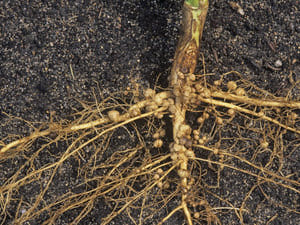Caragana arborescens (Siberian Peashrub): Description, Cultivation, and Uses
Description
Caragana arborescens, commonly known as the Siberian peashrub, is a deciduous shrub or small tree native to Siberia and parts of northern China. It typically grows to 2–6 meters in height and has a spread of 3–4 meters. The plant is hardy, tolerating temperatures as low as -40°C, and thrives in poor soils. It has compound leaves composed of 8–12 small leaflets and produces yellow, pea-like flowers in spring and early summer (September–November in the southern hemisphere). The flowers are followed by slender, cylindrical seed pods that ripen by late summer (January–March).
The plant's root system fixes nitrogen, enhancing soil fertility. Its dense branching makes it an excellent windbreak or hedge plant.
Propagation
Caragana arborescens can be propagated via seeds, cuttings, or division:
-
Seeds:
- Collect ripe pods in late summer (February–March).
- Soak seeds in warm water for 24 hours to soften the hard seed coat.
- Sow seeds directly in well-drained soil or in pots filled with a seed-raising mix.
- Germination occurs within 2–3 weeks under warm conditions (15–25°C).
-
Cuttings:
- Take semi-hardwood cuttings in early summer (December–January).
- Dip cut ends in rooting hormone and plant in a mixture of sand and compost.
- Keep the cuttings moist and shaded until roots develop, typically within 4–6 weeks.
-
Division:
- Established clumps can be divided in late winter (July–August) before new growth begins.
- Replant divisions immediately in well-prepared soil.
Cultivation
-
Climate:
- Thrives in temperate to cold climates with full sun exposure.
-
Soil:
- Tolerant of a wide range of soils, including sandy, loamy, and clay, provided they are well-drained.
- Prefers soils with a pH of 6.0–7.5 but is adaptable to slightly acidic or alkaline conditions.
-
Watering:
- Drought-tolerant once established but benefits from occasional deep watering during extended dry periods.
-
Pruning:
- Prune in late winter (July–August) to shape the plant or remove dead or damaged branches.
-
Pests and Diseases:
- Generally pest-resistant but may occasionally be affected by aphids or fungal diseases.
Uses and Benefits
-
Edible Seeds:
- The seeds are high in protein and can be cooked or ground into flour. However, they should be consumed in moderation as they contain antinutritional factors.
-
Nitrogen Fixation:
- As a leguminous plant, it improves soil fertility by fixing atmospheric nitrogen through its root nodules.
-
Fodder:
- Leaves and seeds are a nutritious forage for livestock.
-
Windbreaks and Hedges:
- Its dense growth and tolerance for pruning make it suitable for shelterbelts and boundary hedges.
-
Erosion Control:
- Its extensive root system stabilizes soil, preventing erosion.
-
Ornamental Value:
- Bright yellow flowers attract pollinators and add aesthetic value to gardens.
Role in a Forest Garden
Caragana arborescens is an excellent choice for a forest garden due to its multifunctional properties:
- Nitrogen-fixing: Enhances soil fertility for surrounding plants, supporting diverse layers in the forest garden.
- Canopy and Shrub Layer: Fits well as a shrub or small tree in the mid-layer.
- Wildlife Support: Attracts pollinators, provides habitat for birds, and offers seeds as food for wildlife.
- Low Maintenance: Hardy and drought-tolerant, it requires minimal care once established.
In a southern hemisphere forest garden, plant Caragana arborescens in early spring (August–September) for optimal growth and integration into the ecosystem.



